Decoupling carbon emissions and GDP — and addressing leakage

Bernhard Obenhuber
Jun 24, 2020
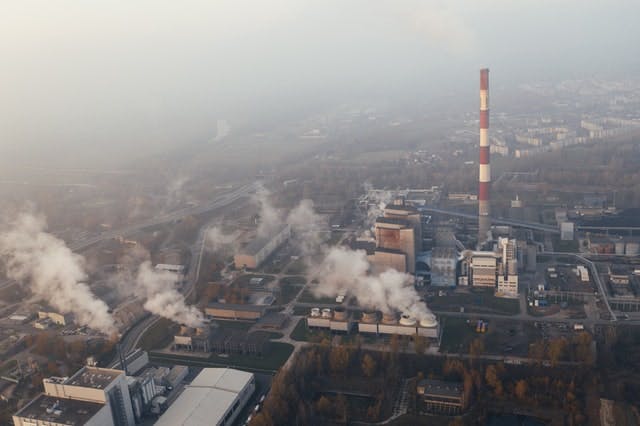
As the world tentatively emerges from the Covid-19 lockdown, governments face near- and medium-term challenges. In the near-term, they are desperate to protect their economies and return to growth; in the medium-term, they need to address the looming climate emergency by rapidly decarbonising their economies.
A number of forward-thinking jurisdictions are attempting to pursue both objectives simultaneously, incorporating green elements in their economic stimulus packages. For example, the European Union has pledged to commit 25% of its €750 billion recovery plan to climate action measures, Germany has announced plans to invest €9 billion in hydrogen infrastructure, and France has attached environmental strings to its €7 billion bailout of Air France.
And China — which pursued a highly carbon-intensive economic recovery after the 2007–08 Global Financial Crisis — has unveiled a ‘New Infrastructure’ investment programme focused on electric vehicles, low-carbon transport, 5G networks and an upgraded electrical grid.
How might analysts assess the success — or otherwise — of these green stimulus packages? An absolute reduction in emissions is, of course, one measure. However, as we have seen during the Covid lockdown, while emissions can be reduced by restricting economic activity, such an approach is not economically sustainable.
Breaking the link between GDP and CO2
Instead, analysts might want to measure the success of governments in decoupling economic activity, as measured in terms of real GDP, from emissions. Historically, there has been a very close link between the two metrics, given that most energy for power, heat and mobility has been derived from the combustion of fossil fuels. However, in recent decades, increasingly efficient use of energy, the switch from fossil-fired power plants to renewables, and the evolution of economies from a dependency on heavy industry to services have all served to weaken this relationship.
To examine this decoupling, we have charted GDP against International Energy Agency data on the production of carbon dioxide (CO2) from fuel combustion, up to 2017 (the last year for which data is available)[1]. We have followed a methodology set out in a working paper produced by the International Monetary Fund that separates the cyclical and trend components in GDP and emissions using a Hodrick-Prescott filtering approach [2].
The exercise clearly illustrates how advanced economies — starting with those in Scandinavia, such as Sweden and Denmark below — are proving able to generate economic growth while also reducing emissions.
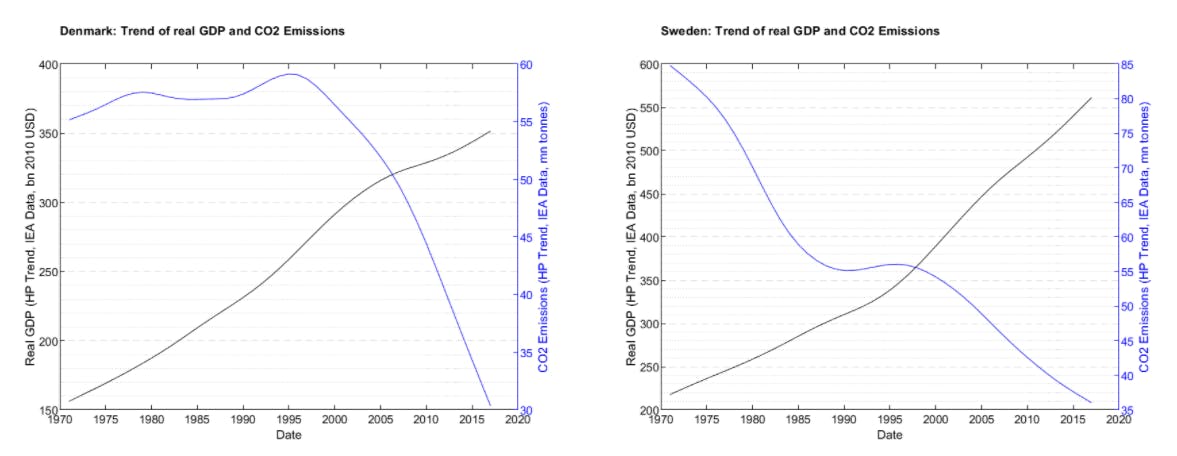
Similarly, emissions decoupling is underway in Anglo-Saxon countries, with both the United Kingdom and the United States showing a similar pattern. In the former, the ‘dash-to-gas’ in the 1980s and 1990s, when natural gas displaced coal to a great extent in the UK’s power generating fleet, led to earlier decoupling than in the US, which has been triggered to a large extent by the growth of shale gas similiarly displacing coal-fired generation.
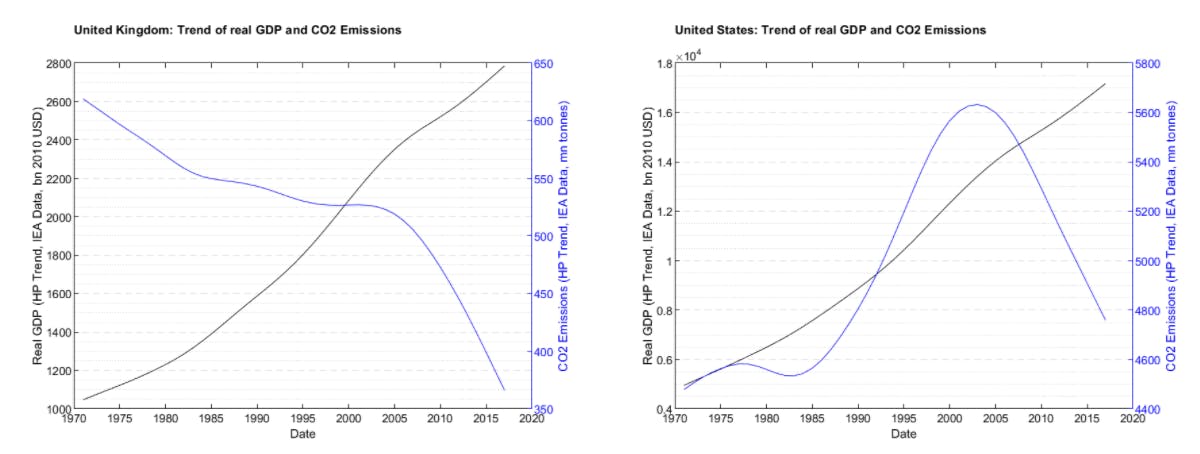
Offshoring heavy industry and carbon emissions
Other factors are at work beside coal-to-gas switching by power producers. As noted above, emissions tend to fall as economies shift from a focus on carbon-intensive heavy industry towards less carbon-intensive service sectors. To a large extent, that carbon-intensive economic activity does not disappear — it is merely moved to jurisdictions with lower input and labour costs, followed by the associated carbon emissions.
This so-called carbon leakage is evident in GDP-CO2 emission charts from developing countries. As can be seen from the charts from a sample of such countries — China, India, Mexico and Turkey — GDP and emissions growth remain closely linked, as these countries have built out their economies with the same reliance on carbon-intensive energy sources that laid the foundations of the rich world’s economies.
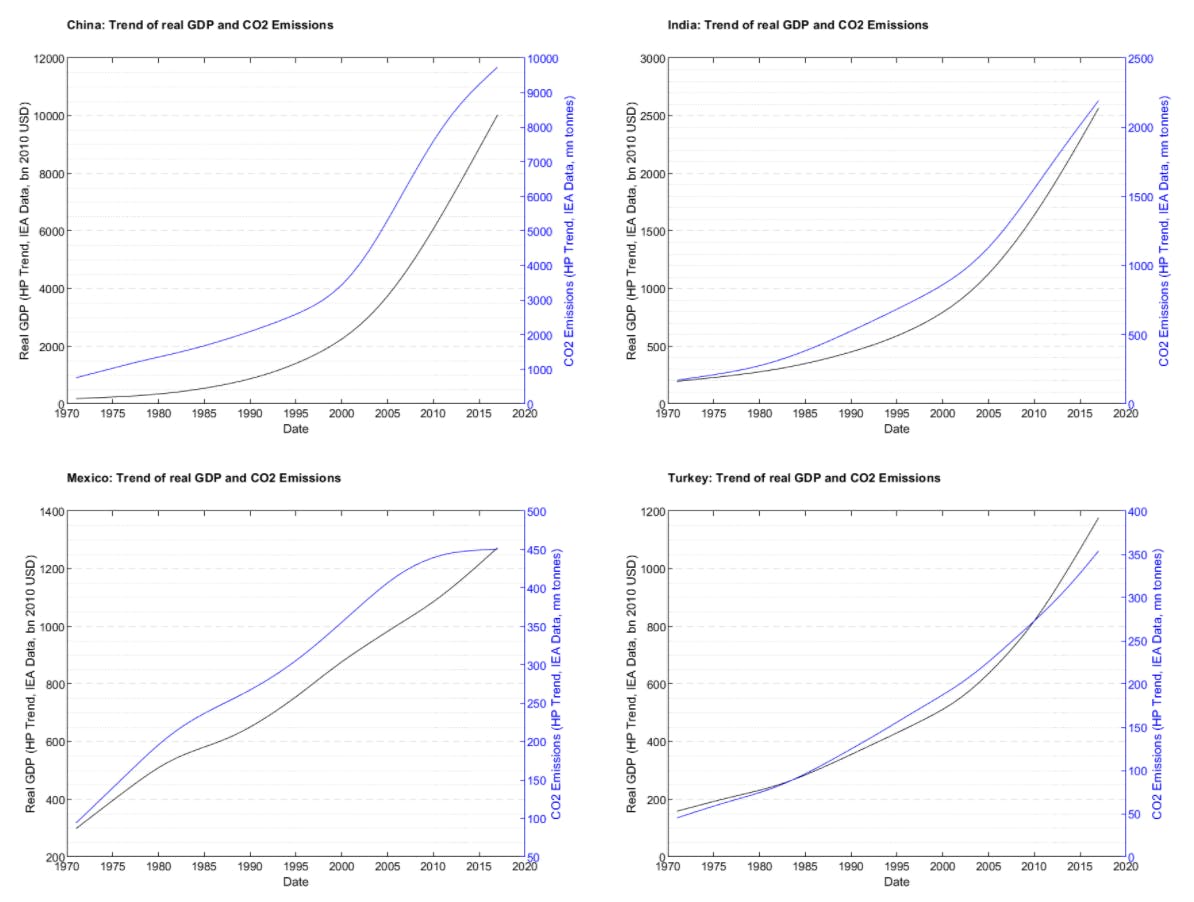
The charts show the emissions curve starting to bend in China, which has become the world’s largest generator of renewable energy, and Mexico, which became, in 2012, the first developing country to pass a climate change law. However, carbon and GDP continue to demonstrate a close relationship.
This carbon leakage can also be illustrated by analysing carbon consumption — measuring emissions not in the jurisdiction where they were produced but by assigning them to the jurisdiction where the associated product was consumed. Given global supply chains, this is a complex task, but here we used data produced by KGM & Associates, using a global multi-region input-output (MRIO) model which traces emissions through those supply chains.
Counting carbon consumption
As the charts show, the story becomes more nuanced. In all four of our developed country cases, emissions are, measured on a consumption-basis, higher than the emissions they produce domestically. In all cases, consumption-based emissions are declining, but more slowly in Sweden — often perceived as an environmental leader — than in the US.
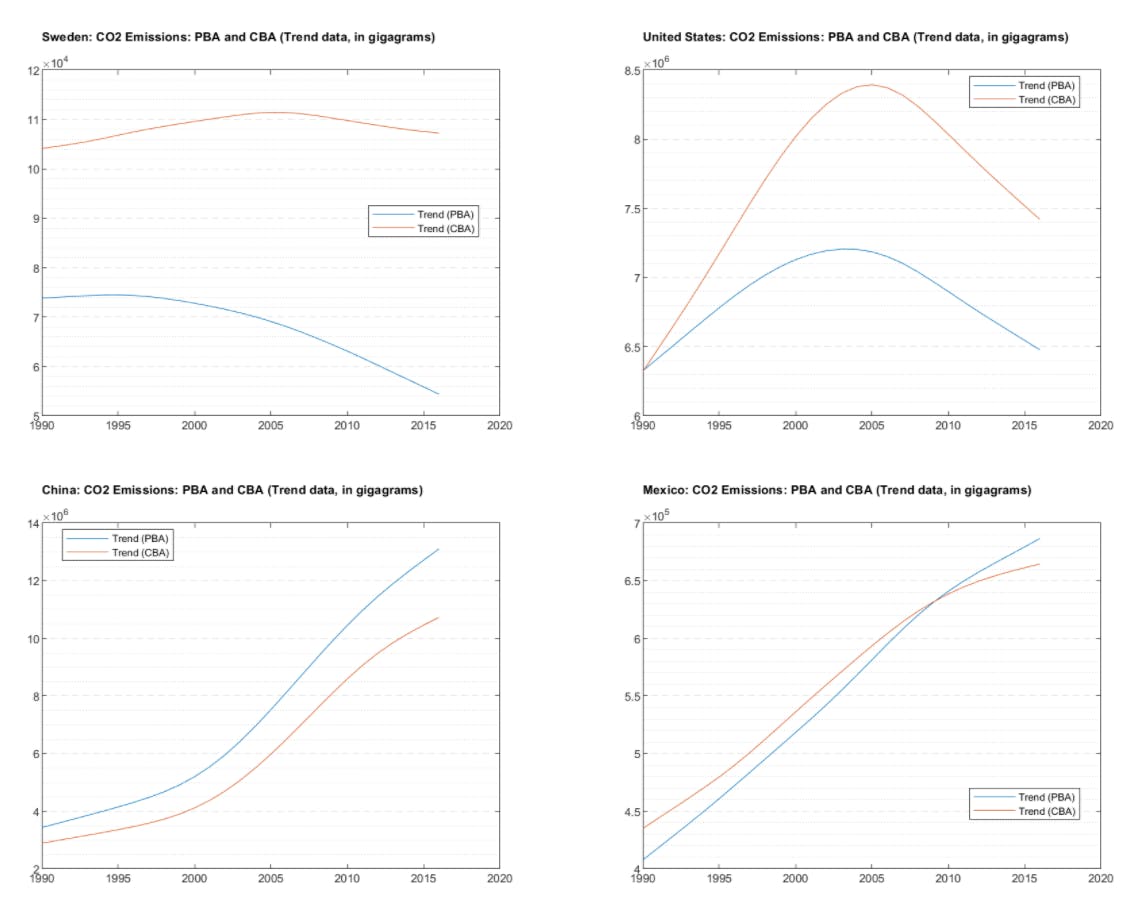
These data sets are a handful of the ESG and macroeconomic data sets provided on www.countryrisk.io, an open-access platform that allows its users to undertake their own country-risk assessments, including by integrating ESG factors.
By combining and examining ESG factors such as emissions by consumption and production, analysts can begin to build objective assessments of the impacts of green stimulus programmes and, in turn, their impacts on sovereign credit risk. In addition, data on carbon consumption can offer insights into questions of tariffs and trade as governments look to address issues of carbon leakage.
This analysis also helps to identify countries with a higher transition risk as the capital market is shifting towards a more explicit pricing of ESG risks.
For more information, see www.countryrisk.io.
Footnotes:
[1] While this dataset provides the most up-to-date figures for CO2 emissions, it does not include emissions of other greenhouse gases, such as methane, nitrous oxide and fluorinated gases. While these can be significant sources in some economies, their exclusion from the analysis does not materially alter the conclusions.
[2] IMF (2018), The Long-Run Decoupling of Emissions and Output: Evidence from the Largest Emitters, working paper by Gail Cohen, João Tovar Jalles, Prakash Loungani, and Ricardo Marto
